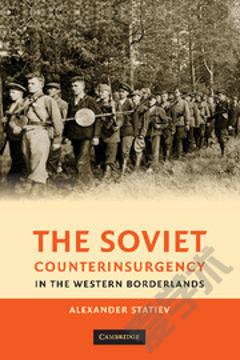The Soviet Counterinsurgency in the Western Borderlands
Introduction 1. Origins of Soviet counterinsurgency 2. The borderland societies in the interwar period: the first Soviet occupation and the emergence of nationalist resistance 3. The borderlands under German occupation (1941-4): social context of the Soviet re-conquest 4. Nationalist resistance after the Soviet re-conquest 5. Soviet agrarian policy as a pacification tool 6. Deportations, 'repatriations' and other types of forced migrations as aspects of security policy 7. Amnesties 8. Red rurales: the destruction battalions 9. Police tactics: actions of NKVD security units, intelligence gathering, covert operations and intimidation 10. The church in Soviet security policy 11. Violations of official policy and their impact on pacification 12. Conclusion: nationalist resistance and Soviet counterinsurgency in the global context Appendix 1. Note on used terms and geographic and personal names Appendix 2. Note on primary sources.
{{comment.content}}








 京公网安备 11010802027623号
京公网安备 11010802027623号